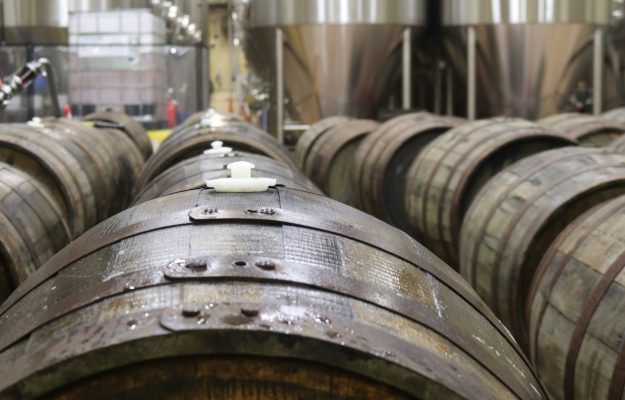In Italian cellars, as of November 30, 2022 (but data are updated to December 13, 2022), 55.6 million hectoliters of wine were stored, up (+19.5%) on last October 31, 2022 (+9 million hectoliters) and 7.1% higher than on November 30, 2021 (+3.6 million hectoliters): these are the numbers from “Cantina Italia”, the latest report compiled by Icqrf, based on data contained in the computerized Wine Registers. In addition to wine, there were 12.8 million hectoliters of musts and 12.1 million hectoliters of new wine still in fermentation (Vnainf) in the cellars.
On November 30, 2021, higher stock values are observed for all product categories: wines (+7.1%), musts (+2%) and Vnainf (+5.5%). 51.4% of the wine held is PDO, with a predominance of white (50%). 27.4% of wine is PGI, with a prevalence of red (57.3%), while varietal wines held make up just 1.3% of the total.
58.4% of wine in Italy is held in northern regions. Veneto alone holds 24.5% of national wine (equal to 13.6 million hectoliters), mainly due to the significant contribution of stocks in the provinces of Treviso (11%) and Verona (7.9%). This was followed by Emilia Romagna with 12.4% (6.9 million hectoliters), Puglia with 11.9% (6.6 million hectoliters), Tuscany with 8.9% (4.9 million hectoliters), Sicily with 8.2% (4.5 million hectoliters), and Piedmont with 8.1% (4.4 million hectoliters), Trentino Alto Adige with 5% (2.7 million hectoliters), Abruzzo with 4.3% (2.3 million hectoliters), Friuli Venezia Giulia with 4.2% (2.3 million hectoliters), Lombardy with 4% (2.2 million hectoliters), and the other regions with 8.5%.
Scrolling through the report, it reveals that for appellation wines (PDO and PGI), the largest stocks concern Prosecco, which is worth 11.2% and 4.9 million hectoliters, followed by Puglia (5.9% and 2.5 million hectoliters), Terre Siciliane (4.1% and 1.8 million hectoliters), Sicily (4% and 1.7 million hectoliters), Delle Venezie (3.9% and 1.7 million hectoliters), Salento (3.2% and 1.3 million hectoliters), Veneto (3.2% and 1.3 million hectoliters), Tuscan or Toscana (3.2% and 1.3 million hectoliters), Rubicone (2.9% and 1.2 million hectoliters), Montepulciano d’Abruzzo (2.8% and 1.2 million hectoliters), Chianti (2.3% and 988. 000 hectoliters), Conegliano Valdobbiadene Prosecco (2% and 855,00 hectoliters), Chianti Classico (1.6% and 713,00 hectoliters), Trentino (1.6% and 687,00 hectoliters), Emilia (1.5% and 644,000 hectoliters), Verona Province (1.3% and 582. 000 hectoliters), Franciacorta (1.3% and 550,000 hectoliters), Tre Venezie (1.1% and 499,000 hectoliters), Barolo (1.1% and 498,00 hectoliters), Primitivo di Manduria (1.1% and 468,000 hectoliters).
For musts, the majority is held in regions of southern (50%) and northern (42%) Italy. Two regions hold 65.9% of musts, Apulia (43%) and Emilia-Romagna (22.9%). There are 12.1 million hectoliters of new wines still in fermentation, 43.7% in storage in the north, 26.0% in the south, 17.9% in the center and the remaining 12.4% in the islands.
Copyright © 2000/2025
Contatti: info@winenews.it
Seguici anche su Twitter: @WineNewsIt
Seguici anche su Facebook: @winenewsit
Questo articolo è tratto dall'archivio di WineNews - Tutti i diritti riservati - Copyright © 2000/2025








































































































































































































